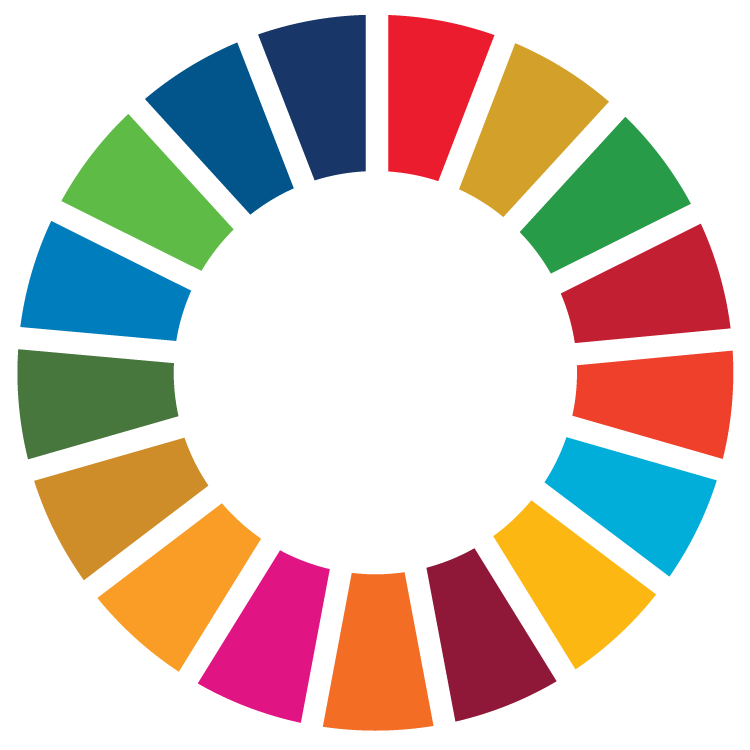Text traduït
Aquesta assignatura s'imparteix en anglès. El pla docent en català és una traducció de l'anglès.
La traducció al català està desactualitzada.
Consulta preferentment el text original!
Si ho prefereixes, consulta la traducció!
Texto traducido
Esta asignatura se imparte en inglés. El plan docente en español es una traducción del inglés.
La traducción al español está desactualizada.
¡Consulta preferentemente el texto original!
Si lo prefieres, ¡consulta la traducción!
Original text
This subject is taught in English. The course guide was originally written in English.
Course
Advertising and Public Relations
Subject
Network, 2.0 & Content Curator
Type
Compulsory (CO)
Academic year
3
Credits
3.0
Semester
2nd
| Group | Language of instruction | Teachers |
|---|---|---|
| G25, classroom instruction, afternoons | English | Nahuel Faedo |
Sustainable Development Goals (SDG)

- 5. Gender equality
- 10. Reduced inequalities
- 12. Responsible consumption and production
- 16. Peace, justice and strong institutions
Objectives
To deal with the abundance of information we currently receive, organisations need to manage the content strategically, and prioritise it to provide effective key messages. In the Network 2.0 and Content Curator subject, students use the course content to identify and develop a social media campaign with its communication plan.
Learning outcomes
Under review. Pending publication
Content
- What is content curation and what benefits does it have for organisations?
- The 4Ss (search, select, 'sense' making, share), from research to publication
- Strategic objectives. SMART objectives
- Defining an audience
- Visual identity
- Information adapted to the online universe: web, social networks, blogs, wikis, intranets, newsletters
- Social networks as a tool for content production and dissemination.
- SEO and SEM in content strategy
- Communication plan and content plan
- Communication strategy and Public Relations regarding bloggers and influencers
- Online reputation management
- Communication crisis in the online environment
- Evaluation of online objectives
- Web analytics and brand reputation tools
Evaluation
The evaluation consists of the following elements:
- Course project (50%): The main objective is to create and implement a social media campaign along with its communication plan. The entire campaign process must be thoroughly documented in a report. Additionally, students are required to give a presentation about their social media campaign in front of their classmates. This activity is to be conducted in groups of 3-4 students. Not recoverable.
- Flipped Classrooms (30%): Each week, a different group presents at the beginning of the class a summary of a topic designated by the lecturer. The goal is to delve into a subject beneficial for the students' social media campaign. It is crucial that the group demonstrates debating skills and interacts appropriately with their classmates. This activity is to be conducted in groups of 3-4 students. Recoverable (making a presentation of a different topic).
- Participation (20%): The contribution of ideas and reflections in class discussions are taken into account. The participation also implies asking questions when the groups are presenting the topics. Not recoverable.
Methodology
The classes combine a theoretical explanation (45 minutes) and a practical part (75 minutes). The latter aims to ensure the achievement of theoretical knowledge and is based on discussions and course project mentoring.
The CLIL methodology is used and participation, reflection, critical thinking and the presentation of ideas in an assertive and effective way are encouraged. Being a class taught in English and with all materials in this language, communication in this language is encouraged through class discussions and presentations.
In terms of resources, the subject requires doing activities on the computer. Additionally, readings that students must prepare before class are utilized, along with videos featuring case studies on the creation of social media campaigns, as well as the management of communication and online public relations within various companies.
With regard to the elaboration of the project, the social media campaign must progress in parallel to the topics covered in class. It is monitored throughout the course, either at the end of class or through tutorials with the different groups of students.
Bibliography
Key references
- Fernández, Rovira C. & Giraldo, Luque S. (2022). Predictive Technology in Social Media. CRC Press.
- Google (2017). Search Engine Optimization: The starter guide. Retrieved from http://static.googleusercontent.com/media/www.google.co.jp/es/jp/intl/en/webmasters/docs/search-engine-optimization-starter-guide.pdf
- Hootsuite (2018). Beginners guide to content curation. Retrieved from https://blog.hootsuite.com/beginners-guide-to-content-curation/
- Mae Kim, C. (2021). Social media campaigns: Strategies for public relations and marketing (2 ed.). Routledge.
Further reading
Teachers will provide complementary bibliography and compulsory reading throughout the course via the Virtual Campus.